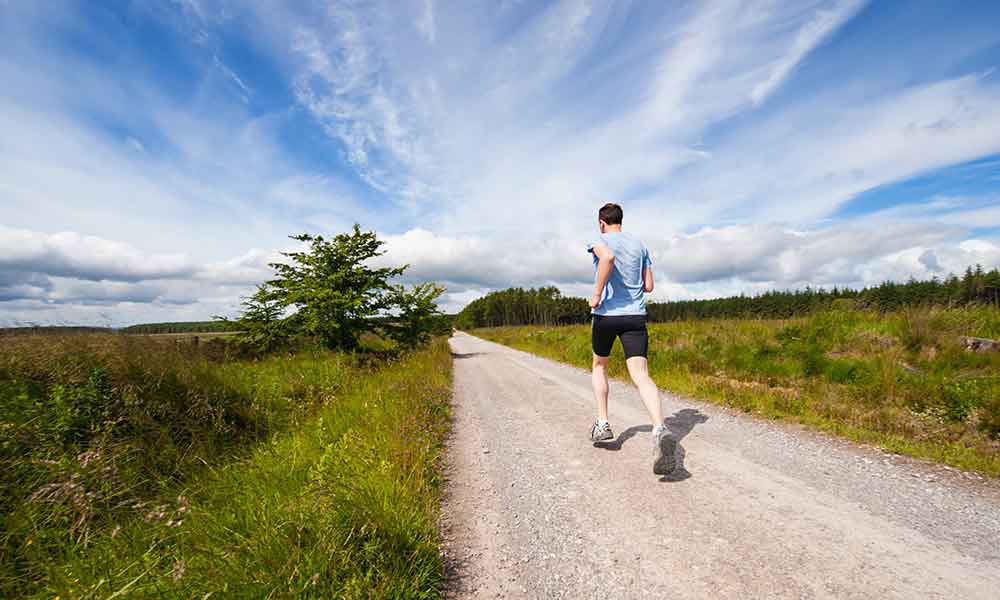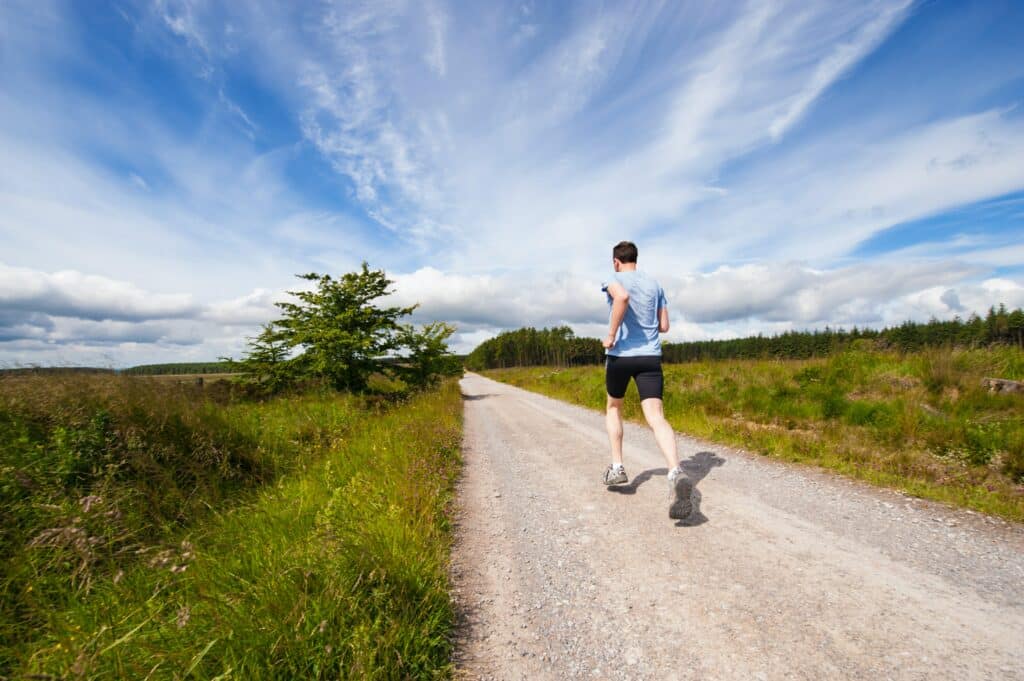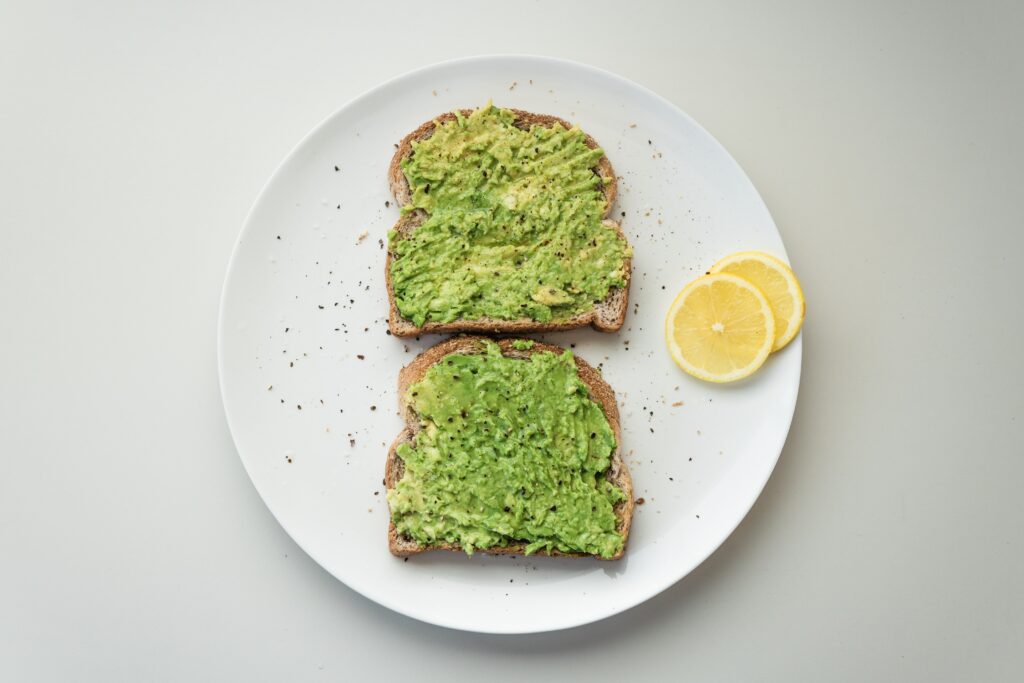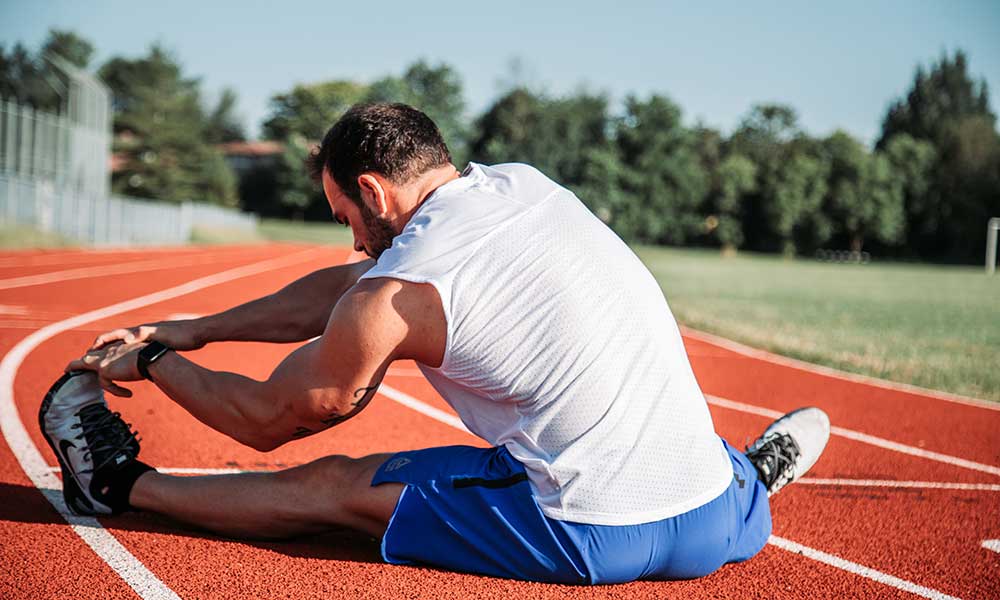Your body is constantly trying to naturally exfoliate by sending dead skin off. In the case of runners or athletes who tend to spend long hours training in shoes and socks, the dead skin builds up into hard skin on the feet which often begins to crack, flake and can even turn into athlete’s foot.
For runners, especially, where each part of the foot impacts the ground most—and makes continued contact with the sock and shoe—dead skin begins to form into thick, hard areas. This is your body’s natural protection for your feet which enables you to run without damaging your feet.
But, this means that when you take your shoes off to relax, you may have unsightly calluses, peeling or cracked skin, eczema, or athlete’s foot. So, getting rid of the dead skin on your feet is good for your overall foot-skin health, but you want to do it in such a way that you retain some of the protection for the high-friction areas on your feet.
And as your foot health is critical to your success as a runner, any issue affecting the skin of your foot can potentially sideline you. These practices can be used as prevention as well as treatment in some cases.
First we’ll talk about the ways to clean up your calluses and cracked-skin, then we’ll talk more about athlete’s foot, which is a more serious and uncomfortable fungal condition—and highly contagious.
How to get dead skin off feet?
There are several different methods of removing dead skin cells from your feet that you can easily do at home without much investment.
If you have any sores or wounds on your feet, using scrubs or soaks is not advised without first consulting your general practitioner or podiatrist to find out the right treatment for your feet.
In addition, if you have an issue with the skin of your feet that is persistent even after your at-home treatments, you should speak with your medical professional to figure out next steps.
Pumice stone
A pumice stone is a natural stone made of lava. It can be used as a gentle exfoliant. Prior to using, prepare a warm foot bath and soak your feet for 10 minutes to soften them.
Then, using the pumice stone, rub your foot gently in a circular or sideways motion. Try to remove only the first layer of skin.
Once you’ve finished, clean and dry your feet then apply a lotion or oil to help keep your feet soft. Avoid anything with alcohol as an ingredient as it could lead to more dry skin.
Epsom salt
Epsom salt is a mineral salt that occurs naturally and is a compound of magnesium and sulfate. It is great for helping remove dead skin cells and helping with eczema and psoriasis.
There are two ways to use epsom salt for getting rid of your dead skin cells. You can either soak your feet in warm water with epsom salt dissolved into it or create your own rub that can be applied with a washcloth, sponge or by hand.
To soak, simply mix about ½ cup of epsom salt into warm water. You can either do this in a full bathtub or the container you are using for your foot bath. For runners and athletes in general, there is an added bonus. Soaking in warm water (not hot) mixed with epsom salt can help with muscle soreness. Soaking for about 15-20 minutes is ideal.
Once you’ve finished soaking, if desired, use a brush or pumice stone on the bottom of your feet remembering to work gently to remove only the first layer of skin.
To create a scrub, mix a tablespoon of oil and a handful of epsom salt together. Apply that to a sponge then gently scrub your feet then rinse after you’re done.
Foot scrub
Specific foot scrubs are available at many pharmacies or drug stores. Look for ones that are specifically exfoliating with granules.
These can typically be applied using your hands, without needing any additional items. However, it is always best to follow the instructions on the package.
Emery board
Find an emery board style file at your local store. These tend to be fairly cheap and easy to find. For the best results, use the file on the hard skin after bathing, when the skin is still soft. Gently file the area only removing the first layer of skin. After all, these hard bits are protecting your feet when you run, so you’ll want to leave some of it behind.
This should leave your feet looking and feeling better. Repeat this process as often as necessary.
Vinegar soak
Among its many other benefits, vinegar is a great way to remove the dead skin from your feet. Common vinegars like apple cider vinegar and white vinegar work equally well and are common to many households.
To make your soak, mix 2 parts warm water with 1 part of your desired vinegar then soak your feet for 10-15 minutes. Once you’re done you can use your emery board or pumice stone to gently scrub.
After you’ve finished with the soaking and scrubbing, dry your feet then apply an alcohol-free moisturizer and put on a pair of socks which will help the vinegar soak to take effect. You can also use coconut oil or petroleum jelly for this step as well.
To avoid having the opposite effect on your feet, it is best to only do this only a couple times a week. This is not an everyday treatment.
Leave it to the professionals
There are other techniques that involve more invasive measures using a scraper or a razor. These methods should be done by a podiatrist. Doing this yourself, at home, could result in cuts or other wounds which then leave you open to bacterial infections.
What should have been something fairly easy to deal with, then turns into an actual injury keeping you from running altogether.
Athlete’s Foot
Athlete’s foot or tinea pedis has earned its name because it commonly afflicts athletes who wear their shoes tightly whose feet sweat while doing so. This condition occurs when a fungus that feeds on your dead skin begins to develop into an infection starting between your toes and turning into an itchy rash.
Not only is it incredibly uncomfortable, it is highly contagious and can be passed along on clothes or towels. If you have athlete’s foot, you’ll want to wash and change your socks regularly as well as your towels or washcloths. Wearing flip flops in communal showers is also recommended.
How to treat athlete’s foot
Antifungal creams that contain terbafine as the active ingredient are the most effective. Apply them according to the recommendations on the package or following the advice of your medical professional.
You may need to continue applying even after the rash is gone to make sure the fungus is gone and doesn’t reappear.
How to prevent athlete’s foot
If you are prone to athlete’s foot, try making a mixture of water and tea tree oil and soaking your feet for about 15 minutes once a week.
Using antifungal powder in your running shoes or athletic shoes prior to each use will also go a long way in preventing the spread of this fungal infection.
Is it OK to peel dead skin off feet?
In general, you should be able to peel the dead skin off without too much trouble. The risk is that sometimes peeling will take you down to the surface of the skin and end up causing a painful spot on your feet. This can lead to some uncomfortable running and walking while your body works on rebuilding calluses for protection.
It is preferable to use one of the exfoliating options we’ve talked about above as they allow you more control over the depth of dead-skin removal.







